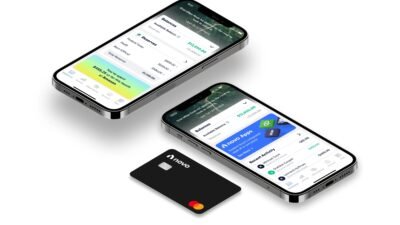Understanding blockchain and cryptocurrency is essential in today’s rapidly evolving digital landscape. How does blockchain and cryptocurrency work ? let’s find out more
With the rise of technologies like blockchain and the increasing popularity of cryptocurrencies such as Bitcoin. It has become crucial for individuals and businesses alike to have a comprehensive understanding of how these technologies work and their potential impact on various industries.
This process is called “mining”, which runs on blockchain technology. In other words, cryptocurrencies are developed based on blockchain technology. However, blockchain is not necessarily for cryptocurrencies. As it also develops other types of applications like distributed ledgers and smart contracts.
Therefore, to fully grasp the structure and functionality of cryptocurrencies, one must first comprehend the underlying principles of blockchain technology. Blockchain, at its core, is a decentralized digital ledger that facilitates peer-to-peer economic transactions without the need for a trusted third party.
This means that instead of relying on a central authority like a bank or government. Transactions are verified and recorded by a network of computers spread across the globe.
How does Blockchain and Cryptocurrency Work
To understand how blockchain works, it is important to grasp the concept of a distributed ledger. A distributed ledger refers to a network of computers. Known as nodes, that collectively maintain and update a shared database in a decentralized manner.
This decentralized nature eliminates the need for a centralized authority to validate and record transactions. Instead, transactions are verified by multiple participants in the network through a process known as consensus.
Consensus is achieved through a combination of cryptographic algorithms and consensus protocols, ensuring that all participants agree on the validity of transactions before they are recorded on the ledger. Once a transaction is verified, it is grouped together with other transactions into a block.
Before a block can be added to the blockchain, it must go through a process called mining. Mining involves solving complex mathematical problems that require substantial computational power. This mining process serves two main purposes.
First, it ensures the security and integrity of the blockchain network by making it computationally expensive for anyone to alter the records on the ledger.
Second, mining incentivizes participants in the network to contribute their computational power and resources to maintain the blockchain. By successfully mining a block and adding it to the blockchain, miners are rewarded with newly minted cryptocurrency or transaction fees.
The distributed ledger technology of blockchain relies on network nodes to add and validate blocks, which are digital records stored in packages. Blockchain works in a consensus manner where network nodes are responsible for adding and validating blocks.
Benefits of Blockchain Technology
The technology known as blockchain offers numerous benefits that have the potential to revolutionize various industries. One of the key benefits of blockchain technology is its immutability. The technology known as blockchain offers numerous benefits that have the potential to revolutionize various industries.
One of the key benefits of blockchain technology is its immutability. Blockchain technology offers numerous benefits that have the potential to revolutionize various industries. One of the key benefits of blockchain technology is its immutability.
Blockchain technology provides a shared, distributed ledger that is immutable, meaning once transactions are recorded, they cannot be altered or tampered with.
This immutability ensures the integrity and trustworthiness of the transactions recorded on the blockchain, making it ideal for industries such as finance, supply chain management, healthcare, and more. In the realm of data sharing, blockchain technology also offers significant advantages.
By using blockchain technology, data sharing can become more transparent and secure. The use of blockchain technology in data sharing allows for a full history of data transactions to be recorded and tracked.
This provides individuals with the ability to track and verify the authenticity of data, ultimately leading to a higher level of trust in the information being shared. How does blockchain and cryptocurrency work in data sharing ?
Blockchain Technology in Data Sharing
In the context of data sharing, blockchain technology has the potential to revolutionize the way information is shared and accessed. Blockchain technology offers a decentralized approach to data sharing, eliminating the need for central authorities and intermediaries.
This decentralization ensures that no single entity has control over the data, reducing the risk of manipulation or unauthorized access. Furthermore, blockchain technology provides better information traceability and data transparency compared to classical technologies.
With blockchain, each data transaction is recorded on a chain of immutable blocks, creating a transparent and auditable history of the data. This transparency enables individuals to track the data and verify its authenticity, leading to a higher level of trust in the shared information. In recent years, companies have started exploring the use of blockchain technology for genomic data sharing.
The goal is to empower individuals to have greater control over their genomic data and potentially receive more immediate health benefits. By leveraging blockchain technology in genomic data sharing, individuals can have better control over their personal genetic information. They can choose who they want to share it with and have the ability to track and manage access rights.
Overall
Overall, the use of blockchain technology in data sharing offers numerous benefits. These include increased transparency, enhanced security, improved traceability, and greater individual control over personal data. Data sharing plays a crucial role in various industries, from healthcare to research.
The use of blockchain technology in data sharing has the potential to revolutionize these industries by providing a secure and transparent platform for exchanging information. The Blockchain technology enables the construction of a chain of immutable blocks recording data transactions. Which is particularly beneficial in data sharing. It provides a full history of what has happened to the data, allowing individuals to track and verify its authenticity.
This can lead to a higher level of trust in the shared information and reduce the risk of malicious attacks or errors. Furthermore, the decentralized nature of blockchain technology eliminates the need for central authorities and intermediaries.
This means that individuals have more control over their data. And can directly interact with each other, enhancing transparency and reducing the reliance on third parties. In the field of medicine, blockchain technology has shown promise in improving the management of electronic health records.
Thereby, how does blockchain and cryptocurrency work.












